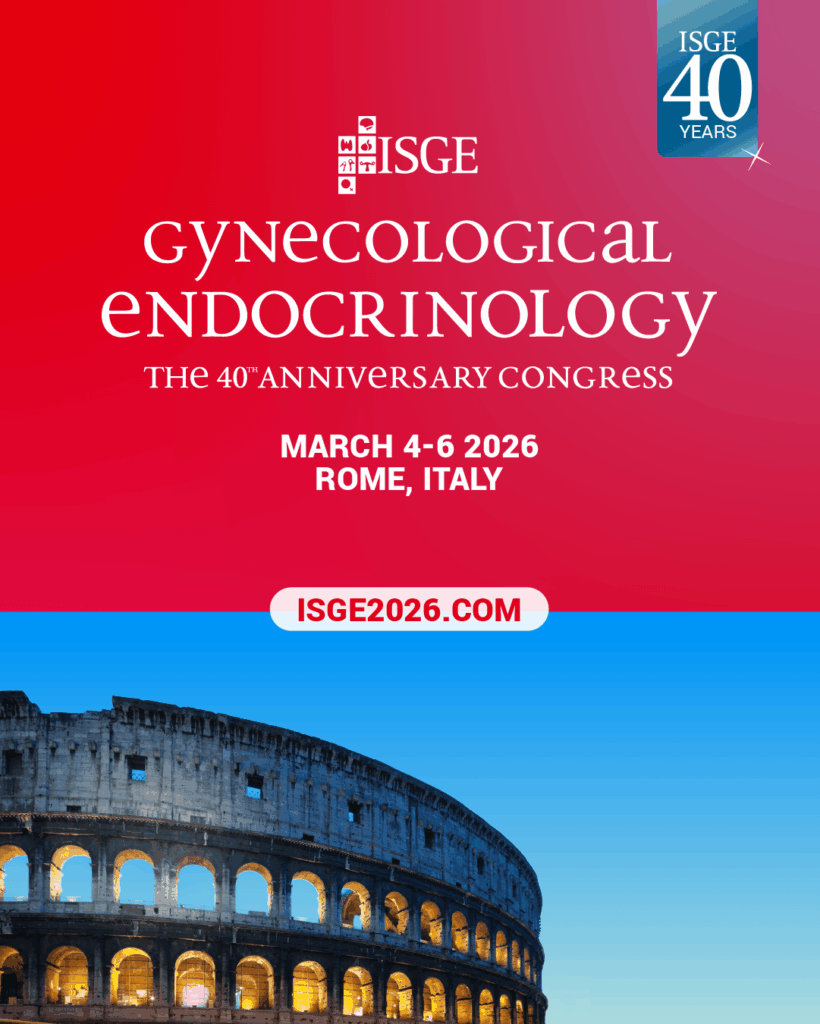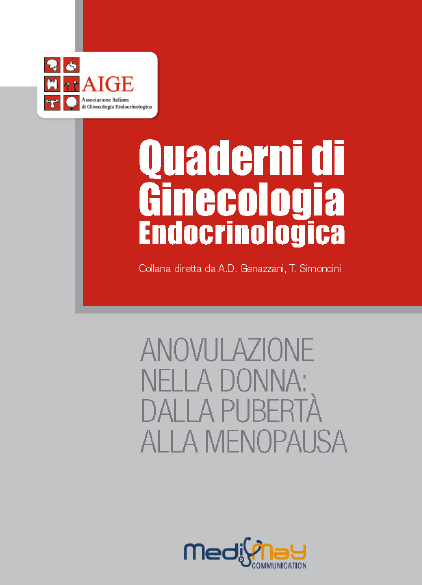-
Timur Gurgan, Aygul Demirol, Suleyman Guven, Moncef Benkhalifa, Bagdagul Girgin, Tin Chiu Li
Intravenous calcium infusion as a novel preventive therapy of ovarian hyperstimulation syndrome for patients with polycystic ovarian syndrome
Fertil Steril 96: 53-57, 2011
Abstract
Objective To evaluate the effectiveness of IV calcium infusion on prevention of ovarian hyperstimulation syndrome (OHSS) in patients with polycystic ovary syndrome undergoing assisted reproductive techniques cycles.
Design A retrospective comparative study.
Setting Assisted reproduction techniques centre in Turkey.
Patient(s) Four hundred fifty-five women with high risk for OHSS.
Intervention(s) The patients in group I (n = 84) were administered IV calcium gluconate for prevention of OHSS, and the patients in group II (n = 371) comprised the control group, with no manipulation for prevention of OHSS and were age- and body mass index–matched with the study group.
Main Outcome Measure(s) Ovarian hyperstimulation syndrome rate, clinical pregnancy rate.
Result(s) Mean (±SD) ages of the women in the calcium infusion group (group I) and the control group (group II) were comparable (30.5 ± 4.3 vs. 31.4 ± 3.9, respectively). Ovarian hyperstimulation syndrome was found in 16.2% (60 patients) in group II, whereas in group I, only 3 patients (3.6%) developed OHSS. Interestingly, all the hyperstimulation cases in group I were mild, and there was no severe effect. Implantation rates were similar in both groups. Furthermore, we obtained clinical pregnancy in nearly 40.5% in group I and 28.8% in group II. The live-birth rate was 38.1% in the calcium infusion group and 24.8% in the control group.
Conclusion(s) Intravenous calcium infusion resulted in a significantly lower rate of development of OHSS for patients with polycystic ovary syndrome and high risk of OHSS. This novel therapy may be used for prevention of OHSS effectively
-
NICOLAS GALAZIS, MYRIA GALAZI, WILLIAM ATIOMO
D-Chiro-inositol and its significance in polycystic ovary syndrome: a systematic Review
Gynecological Endocrinology, 27: 256–262, 2011
Abstract
Background. The pathogenesis of polycystic ovary syndrome (PCOS) has been linked to the development of insulin resistance and hyperinsulinemia. The objective of this study is to investigate the effects of insulin sensitising agents such as D-chiro-inositol (DCI) on ovulation and insulin resistance in women with PCOS.
Methods. This was a systematic review done in an Academic Department of Obstetrics and Gynaecology in the UK of all studies published on PCOS and DCI up till May 2010. Patients were women with PCOS receiving DCI or where the relationship between insulin resistance and DCI had been investigated. Ovulation rates and changes in insulin sensitivity were the main outcome measures.
Results. Less DCI-IPG was released in PCOS women compared to controls and this seems to correlate positively with insulin resistance and hyperinsulinemia evident in these patients. DCI administration had beneficial effects on ovulation, anthropometric and metabolic markers in PCOS women by enhancing insulin. The effects of metformin in improving insulin action in PCOS women was achieved though the release of DCI-IPG mediators.
Conclusions. Heterogeneity observed in the methodologies of each study, the scarcity of relevant studies and the small sample sizes used prohibit reliable conclusions to be drawn. Therefore, more studies must be conducted in the future to evaluate accurately the effects of DCI in PCOS.
-
Dimitrios Panidis, Neoklis A. Georgopoulos, Athanasia Piouka, Ilias Katsikis, Alexandros D. Saltamavros, George Decavalas, Evanthia Diamanti-Kandarakis
The impact of oral contraceptives and metformin on anti-Müllerian hormone serum levels in women with polycystic ovary syndrome and biochemical hyperandrogenemia
Gynecological Endocrinology 27: 587–592, 2011
Abstract
Objective. To assess the impact of metformin and of two different oral contraceptives (OCs) containing cyproterone acetate and drospirenone, on serum anti-Mu¨ llerian hormone (AMH) levels, in a cohort of women with polycystic ovary syndrome (PCOS) with hyperandrogenism.
Design. Prospective randomised study.
Setting. Division of Endocrinology and Human Reproduction, Aristotle University of Thessaloniki.
Patients. Forty-five (45) women with PCOS diagnosed according to the criteria proposed in 1990 by the NIH.
Interventions. Women with PCOS were randomised into three groups, all treated for 6 months: Group A received an OC containing 35 mg ethinylestradiol plus 2 mg cyproterone acetate, Group B received an OC containing 30 mg ethinylestradiol plus 3 mg drospirenone and Group C received metformin 850 mg.
Main outcome measure(s). Anti-Mullerian hormone levels were measured by a specific ELISA.
Results. AMH was significantly decreased under treatment with 35 mg ethinylestradiol plus 2 mg cyproterone acetate (p<0.002 at 3 months and p50.001 at 6 months). Treatment with 30 mg ethinylestradiol plus 3 mg drospirenone, and treatment with metformin 850 mg did not significantly affect serum AMH levels. AMH was significantly decreased under OCs treatment compared to metformin 850 mg (p<0.005).
Conclusion(s). AMH serum levels were significantly decreased under treatment with 35 mg ethinylestradiol plus 2 mg cyproterone acetate, due to decrease in androgens and suppression of gonadotropins.
-
Johanna Schmidt, Mats Brännström, Kerstin Landin-Wilhelmsen, Eva Dahlgren
Reproductive Hormone Levels and Anthropometry in Postmenopausal Women with Polycystic Ovary Syndrome (PCOS): A 21-Year Follow-Up Study of Women Diagnosed with PCOS around 50 Years Ago and Their Age-Matched Controls
JCEM 2011 96: 2178-2185
Abstract
Context: The hormonal and anthropometric profile of premenopausal women with polycystic ovary syndrome (PCOS) is well described, but there is a lack of data concerning changes in these variables into the postmenopausal period.
Objective: Our objective was to examine whether PCOS women differ from normal women regarding levels of reproductive hormones, anthropometry, and presence of hirsutism/climacteric symptoms also after menopause.
Design and Setting: In this prospective study, women with PCOS (61–79 yr) and age-matched controls, examined in 1987, were reinvestigated at a university hospital.
Participants: Twenty-five PCOS patients (Rotterdam criteria) and 68 controls (randomly allocated from the Gothenburg WHO MONICA study) participated.
Interventions: Reexamination and hormonal measurements were done 21 yr after previous visit.
Main Outcome Measures: FSH, LH, TSH, thyroid peroxidase antibodies, prolactin, estrone, estradiol, SHBG, androstenedione, total testosterone, dehydroepiandrosterone sulfate, free androgen index, and anthropometry were determined. Presence of climacteric symptoms, hirsutism, and menopausal age were recorded.
Results: PCOS women had higher free androgen index (P = 0.001) but lower FSH (P < 0.001) and SHBG (P < 0.01) than controls. Menopausal age, body weight, body mass index, waist to hip ratio, LH, prolactin, androstenedione, dehydroepiandrosterone sulfate, total testosterone, estradiol, and estrone were similar in PCOS and controls. Women with PCOS reported hirsutism more frequently (P < 0.001) but had fewer climacteric symptoms (P < 0.05) and hypothyroidism than controls (P < 0.05).
Conclusions: PCOS women differ from controls with regard to levels of certain reproductive hormones also after menopause, but the established premenopausal increase in waist to hip ratio in PCOS patients disappeared after menopause, mainly due to weight gain among controls. A novel finding was the lower prevalence of hypothyroidism in PCOS women.
-
Charles Chapron, Carlos Souza, Bruno Borghese, Marie-Christine Lafay-Pillet, Pietro Santulli, Gérard Bijaoui, François Goffinet, Dominique de Ziegler
Oral contraceptives and endometriosis: the past use of oral contraceptives for treating severe primary dysmenorrhea is associated with endometriosis, especially deep infiltrating endometriosis Hum. Reprod. 26: 2028-2035, 2011
Abstract
BACKGROUND The relationship between the use of oral contraception (OC) and endometriosis remains controversial. We therefore compared various characteristics of OC use and the surgical diagnosis of endometriosis histologically graded as superficial peritoneal endometriosis (SUP), ovarian endometrioma (OMA) or deep infiltrating endometriosis (DIE).
METHODS This cross-sectional study included 566 patients without visible endometriosis at surgery as controls, and 410 patients with histologically proven endometriosis, categorized by their worst lesions as SUP n = 47, OMA n = 120 and DIE n = 243. Personal data, including on OC use, were prospectively collected during standardized interviews. Statistical analysis was performed using unconditional logistic regression.
RESULTS Past OC users had an increased incidence of endometriosis (adjusted odd ratios (OR) = 2.79, 95% confidence interval (CI) 1.74–5.12, P = 0.002) of any revised American Fertility Society stage. Women who had previously used OC for severe primary dysmenorrhea were even more frequently diagnosed with endometriosis (adjusted OR = 5.6, 95% CI 3.2–9.8), especially for DIE (adjusted OR = 16.2, 95% CI 7.8–35.3). Women who had previously used OC for other reasons also had an increased risk of endometriosis, but to a lesser extent (adjusted OR = 2.6, 95% CI 1.8–4.1). The age at which OC was initiated, duration of OC use and free interval from last OC use were not significantly different between control and endometriosis women, irrespective of histological grading. Current OC users did not show an increased prevalence of endometriosis (OR = 1.22, 95% CI 0.6–2.52).
CONCLUSIONS Our data indicate that a history of OC use for severe primary dysmenorrhea is associated with surgical diagnosis of endometriosis, especially DIE, later in life. However, this does not necessarily mean that use of OC increases the risk of developing endometriosis. Past use of OC for primary dysmenorrhea may serve as a marker for women with endometriosis and DIE.
-
S.B. Kjøtrød, S.M. Carlsen, P.E. Rasmussen, T. Holst-Larsen, J. Mellembakken, A. Thurin-Kjellberg, K. HaapaniemiKouru, L. Morin-Papunen, P. Humaidan, A. Sunde, V. von Düring
Use of metformin before and during assisted reproductive technology in non-obese young infertile women with polycystic ovary syndrome: a prospective, randomized, double-blind, multi-centre study
Hum. Reprod. 26(8): 2045-2053, 2011
Abstract
BACKGROUND To study the effect of metformin before and during assisted reproductive technology (ART) on the clinical pregnancy rate (CPR) in non-obese women with polycystic ovary syndrome (PCOS).
METHODS A multi-centre, prospective, randomized, double-blind study was conducted in eight IVF clinics in four Nordic countries. We enrolled 150 PCOS women with a body mass index <28 kg/m2, and treated them with 2000 mg/day metformin or identical placebo tablets for ≥12 weeks prior to and during long protocol IVF or ICSI and until the day of pregnancy testing. The primary outcome measure was CPR. Secondary outcome measures included spontaneous pregnancy rates during the pretreatment period, and the live birth rate (LBR).
RESULTS Among IVF treated women (n = 112), biochemical pregnancy rates were identical in both groups (42.9%), and there were no significant differences in the metformin versus the placebo group in CPR [39.3 versus 30.4%; 95% confidence interval (CI): −8.6 to 26.5]. The LBR was 37.5 versus 28.6% (95% CI: −8.4 to 26.3). However, prior to IVF there were 15 (20.3%) spontaneous pregnancies in the metformin group and eight (10.7%) in the placebo group (95% CI: −1.9 to 21.1; P = 0.1047). According to intention to treat analyses (n = 149); significantly higher overall CPR were observed in the metformin versus placebo group (50.0 versus 33.3%; 95% CI: −1.1 to 32.3; P = 0.0391). LBR was also significantly higher with use of metformin versus placebo (48.6 versus 32.0; 95% CI: 1.1 to 32.2; P = 0.0383). No major unexpected safety issues or multiple births were reported. More gastrointestinal side effects occurred in the metformin group (41 versus 12%; 95% CI: 0.15 to 0.42; P < 0.001).
CONCLUSIONS Metformin treatment for 12 weeks before and during IVF or ICSI in non-obese women with PCOS significantly increases pregnancy and LBRs compared with placebo. However, there was no effect on the outcome of ART per se.
-
Alexander Swanton, Antony Lighten, Ingrid Granne, Enda McVeigh, Stuart Lavery, Geoff Trew, Alon Talmor, Nick Raine-Fenning, Kannamannadiar Jayaprakasan, Tim Child
Do women with ovaries of polycystic morphology without any other features of PCOS benefit from short-term metformin co-treatment during IVF? A double-blind, placebo-controlled, randomized trial
Hum. Reprod. 26(8): 2178-2184, 2011
Abstract
BACKGROUND Women with ovaries of polycystic morphology (PCO), without any other features of polycystic ovary syndrome (PCOS), respond similarly to women with PCOS when stimulated with exogenous gonadotrophins, and both groups share various endocrinological disturbances underlying their pathology. In women with PCOS, metformin co-treatment during IVF has been shown to increase pregnancy rates and reduce the risk of ovarian hyperstimulation syndrome (OHSS). The aim of this study was to investigate whether metformin co-treatment before and during IVF can also increase the live birth rate (LBR) and lower severe OHSS rates for women with PCO, but no other manifestations of PCOS.
METHODS This study was a double-blind, multi-centre, randomized, placebo-controlled trial. The study population included 134 women with ovulatory PCO (and no evidence of clinical or biochemical hyperandrogenism) undergoing IVF treatment at three tertiary referral IVF units. The primary outcome was LBR.
RESULTS In total, 134 women were randomized, 69 to metformin and 65 to placebo. There were no statistically significant differences between the two groups in baseline characteristics. With regard to IVF outcome, no significant improvements were found in the metformin group when compared with the placebo group. In particular, there was no difference between the groups in rates of live birth [metformin n = 27 (39.1%), placebo n = 30 (46.2), (95% confidence interval 0.38, 1.49, odds ratio = 0.75)], clinical pregnancy [metformin n = 29 (42.0%), placebo n = 33 (50.8%)] or severe OHSS [metformin n = 6 (8.7%), placebo n = 5 (7.7%)].
CONCLUSIONS There appears to be no benefit in metformin co-treatment before and during IVF in women with PCO without any other features of PCOS.
-
M. Rizzo, R.A. Longo, E. Guastella, G.B. Rini, E. Carmina
Assessing cardiovascular risk in Mediterranean women with polycystic ovary syndrome
J. Endocrinol. Invest. 34: 422-426, 2011
Abstract
Background: Although dyslipidemia is common in the polycystic ovary syndrome (PCOS), current diagnostic guidelines suggest to evaluate only plasma HDL-cholesterol and triglyceride concentrations, assuming that, in this disorder, cardiovascular risk is mainly due to the presence of the metabolic syndrome (MS). In the US, MS has been found in up to 50% of PCOS, but in other countries its prevalence is lower.
Methods: We compared the prevalence of MS with that of increased LDL- and non-HDL-cholesterol levels in 350 Mediterranean PCOS women (244 anovulatory and 106 ovulatory), and 95 normo-weight and 90 body mass index (BMI)-matched controls.
Results: The prevalence of MS was 7.1% in PCOS, higher than normoweight and BMI-matched controls (2.4% and 3.5%, respectively, p<0.05 for both). The prevalence of elevated LDL- and non-HDL-cholesterol levels in PCOS was respectively, 14.9% and 8.6%, higher than normoweight (2.1% and 1.0%, respectively, p<0.01 for both) and BMI-matched controls (4.4% and 2.2%, respectively, p<0.05 for both). In PCOS, increased LDL-cholesterol was twice more prevalent than MS or non-HDL-cholesterol. Only a minority of PCOS with MS had increased LDL-cholesterol while increased non-HDL-cholesterol was generally associated to increased LDL-cholesterol.
Conclusions: We have found that in Mediterranean PCOS the prevalence of MS is relatively low while elevated LDL-cholesterol levels are more prevalent. Therefore, beyond MS, a more comprehensive lipid evaluation, including LDL-cholesterol, is needed for a more effective assessment of cardiovascular risk in PCOS.
-
Holly L. Thacker
Assessing Risks and Benefits of Nonhormonal Treatments for Vasomotor Symptoms in Perimenopausal and Postmenopausal Women
Journal of Women’s Health. 20(7): 1007-1016, 2011
Abstract
Background: Vasomotor symptoms (VMS); (hot flushes and night sweats) are the most common menopausal complaint for which women seek treatment. Several therapies can be considered to help manage these complaints. The objective of this review is to assess the risks and benefits of available and emerging therapeutic options for the management of menopausal VMS.
Methods: A review of the literature was conducted based on relevant publications identified through a PubMed search for clinical trials of agents used in the treatment of VMS.
Results: Hormone therapy (HT) remains the most effective treatment available, but there will always remain a need for nonhormonal options. Evidence does not support the efficacy of alternative or over-the-counter products, such as phytoestrogens and black cohosh, and their long-term safety is largely unknown. There is evidence supporting the efficacy of selective serotonin reuptake inhibitors (SSRIs) and serotonin-norepinephrine reuptake inhibitors (SNRIs) for the management of VMS from clinical trials of paroxetine, venlafaxine, and desvenlafaxine. Gabapentin appears to be effective, but the doses required may cause poor tolerability and reduced patient adherence. Data also suggest that clonidine has a modest effect at the expense of considerable adverse effects.
Conclusions: Choosing an appropriate treatment approach for the management of VMS requires careful assessment of the riskbenefit ratio of each alternative, as well as individual patient preference.






